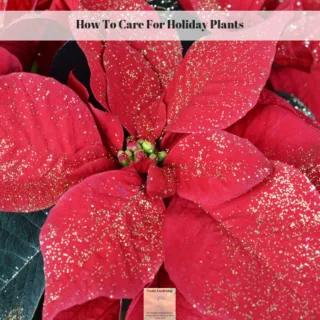Learn how to grow Oleanders indoors or out, depending on your climate.
Oleanders, a member of the Apocynaceae family, are one of the prettier tropical evergreen shrubs that can easily be grown indoors in containers.
In its natural habitat it can reach up to twenty feet in height, but most Oleanders are kept trimmed to a height of between six to ten foot tall.
Oleanders come in both single and double flowered forms and host a wide array of flower colors.
Everything from white, to red, to pink, salmon and even light yellow flowers can be found on these shrubs.
For those of you who cannot or do not wish to grow the large varieties of this beauty, there is also a dwarf variety out called ‘Petite Salmon’ that only reaches four foot in height.

Pruning Oleanders
Pruning is a necessity with Oleanders.
They have a tendency to become quite leggy over time if they are not kept in check.
Oleanders Preferred Growing Conditions
Although they prefer to be grown in bright sunlight, they will grow OK with a bit of shade.
Oleanders are native to the eastern Mediterranean, so naturally they prefer warm, dry conditions with humidity.
Oleanders prefer to be grown in USDA zones eight through ten, but they can survive small amounts of frost, and temperatures down to fifteen degrees Fahrenheit.
They make good houseplants as long as you can keep them out of reach of children and pets.
Oleander Propagation
Oleanders can be propagated fairly easily from seed with a bit of patience.
The easiest method of propagation however is to take cuttings and root them.
I prefer to root plants in a peat moss, vermiculite and perlite mix that is made up of equal parts of each item.
However you can root Oleander in water as long as you use a rooting hormone to help the plant develop roots.
Oleander Pests And Diseases
As toxic as Oleanders are, they are susceptible to aphids, scale and some types of caterpillars.
The following can strip a plant of its leaves in a few days.
Other known problems with disease on Oleanders include leaf scorch which is a lethal disease for the plant.
I chose to grow Oleanders for the first time last year.
Of course, mine are kept potted.
I did get two of the seeds I planted this year to germinate.
The Oleanders I got last year were cuttings.

Oleander Toxicity And Other Potential Health Issues
Extremely toxic plants, Oleanders contain both the toxin oleandrin and also nerioside.
These toxins are quite similar to those found in Digitalis (foxglove).
Be aware that hungry animals will eat Oleanders, and that lethal doses of about ¼ pound (thirty to forty leaves) can kill an adult horse.
Clinical symptoms develop rapidly and may include death without warning.
Other symptoms may be depression with gastrointestinal distress, vomiting, bloody diarrhea, and abdominal pain.
The toxins in Oleanders may also cause irregular heart rates and rhythms.
The beauty of this plant is well worth growing it, but all precautions should be taken to guard against indigestion.
The plant has also been known to cause skin irritations, and should you ever burn the plant, do not inhale the smoke.
If you can keep this plant out of the reach of children and animals, it is definitely worth growing.
If there is any chance of anyone digesting any part of the plant, forget it.
I cannot stress enough how toxic all parts of this plant is, and there seems to be little chance for survival of the victim once any part of this plant is digested.
However, should an accident happen, do not wait to get medical treatment.
Remember to always take precautions with your plants and keep them out of reach of children and pets!
Flowering Tropical Plants
How To Grow Tacca To Be A Successful Bloomer
The black flowers intrigued me, but the bat plant comes in many colors - brown, white and even green! Learn how to grow tacca from seed to bloom!
Amorphophallus Titanium: Life Cycle And Facts About The Corpse Flower
Learn about the life cycle of the Amorphophallus titanium as well as how to propagate it and some fun facts about this unique corpse flower.
Introducing Brugmansia: A Superior, Fragrant, Nocturnal Plant
Brugmansia trees are highly fragrant, night blooming plants with trumpet shaped flowers. Learn how to care for your brugmansia.
How To Care For Holiday Plants
Have you ever wondered how to care for holiday plants such as the Poinsettia or the Christmas Cactus? If so, then check out this holiday plant care guide
Zantedeschia aethiopica Green Goddess
Learn how easy it is to grow Zantedeschia althiopica Green Goddess from seed by using the damp paper towel method plus seed to bloom time.
How To Grow Heliconia
Learn how to grow Heliconia. Proper plant care is important to keeping your Heliconia healthy and thriving.
Plumeria: The Lei Flower Is A Fragrant, Easy To Grow Houseplant
Learn how to care for your Plumeria in ground and in containers. Because of the winter dormancy period it is ideal for summer containers.
Growing Tropical Plants
The key to successfully growing tropical plants is learning about them. Growing tropical plants is easy once you know their basic needs.
7 Sure Fire, Proven Steps For Successful Orchid Care
Successful orchid care is pretty easy once you understand the seven basic steps the plant needs to thrive in your home environment.
How To Grow Enormous Tropical Bulbs In Containers
Learn how to successfully grow tropical bulbs in containers. Regardless of where you live, there are reasons to grow in containers.
Easy Exotic Houseplants: Tropicals That Thrive Indoors in Containers
Tropical plants are the most beautiful, easy to grow indoor houseplants. Start growing exotic houseplants today that fruit and flower!
Coral Vine (Antigonon leptopus): A Beautiful Yet Invasive Climbing Vine
Explore the allure and challenges of Antigonon leptopus, a captivating climbing vine, and its impact on local ecosystems.
Suggested Reading: Two Great Books On Tropical Ornamentals
Learn about two books on tropical ornamentals. Breeding Ornamental Plants and Tropical Ornamentals are a must read for those who love plants.
How To Grow Beautiful, Delicate Tibouchina
Tibouchina are beautiful but delicate plants with gorgeous purple flowers and a velvet like foliage. They can be bushes or vines.
How To Grow Mallows
Learn how to grow mallows, a Malvaceae family which includes some of the most popular plants for the home garden, Hibiscus.
Ophrys
Ophrys are a rare group of terrestrial Orchids that grow in the wild and look like insects, especially bees, hence their common name.
Flowering Trees For Fragrance And Beauty
Flowering trees add beauty and fragrance to the garden. There are ones for tropical climates, cold climates and even indoor gardens.
Expert Advice On How To Grow Beautiful Allamandas
Allamandas come in a range of colors, are easy to grow and do well in containers. They also overwinter well indoors in cold climates.
Rafflesia Arnoldii
Rafflesia arnoldii produces the largest flower in the world yet this colorful, but strange plant is rare and grows on the rainforest floor.
Tropical Plants In Cold Climates: Overwinter Tropical Plants Or Start Over Each Year From Seed
Tropical plants grown in cold climates look great during the summer outside but many make great houseplants in the winter.
Celebrate Halloween With Night Blooming Plants
A cool way to decorate and celebrate Halloween is with night blooming plants! Create a spooky garden that glows in the dark this year!
How To Grow Tropical Plants
Growing tropical plants - also known as houseplants - indoors is fun and enjoyable plus many of them clean the indoor of pollutants.
It is easy to grow exotic looking plants that produce tropical fruit and colorful flowers in a pot in your living room or office.
Many of these plants are easy to start from seed and I share with you five plants that I recommend for indoor growing.
I also share with you why growing your own tropical fruit saves money.
In this video you will learn:
How to bring tropical plants indoors at the end of summer
How to grow tropical plants indoors
How to protect and overwinter tropical plants outdoors in cold climates
How to propagate tropical plants
How to water tropcial plants
How to grow topical plants in a greenhouse

























